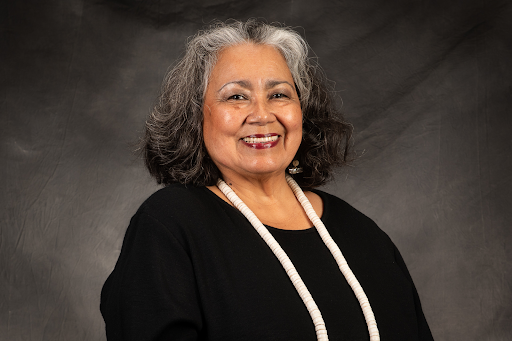Overview
California Native Change Makers: Mary Tarango, Wilton Rancheria

Author:
Dr. Melissa Leal (Ohlone/Costanoan Esselen Nation)
Maggie Peters (Yurok/Karuk) NASMC Learning Specialists Humboldt County Office of Education
Grades: 9-12
Suggested Amount of Time: Three 55 minute sessions for instruction and additional periods for collaborative presentation creation
Curriculum Themes
- History
- Cultural Strengths
- Law/Government
- Cross Curricular Integration
Learning Goals
Understand the concept of a Change Maker by examining the life and contributions of Mary Tarango and her role in advocating for the Wilton Rancheria community.
Analyze the historical impact of federal policies such as the Rancheria Act of 1958 and the termination and restoration of tribal recognition, with a focus on Native sovereignty and self-determination.
Develop research skills by gathering information from reliable sources and synthesizing complex ideas related to Native history, leadership, and activism.
Produce a clear and coherent multimedia presentation that explains Mary Tarango’s contributions, using effective organization, visuals, and technology tools.
Collaborate with a partner to plan, create, revise, and present their work, demonstrating shared responsibility and teamwork.
Reflect on the importance of Native voices and leadership in preserving cultural identity, rights, and land for future generations.
Lesson Overview
This lesson focuses on Mary Tarango, a key figure in the Wilton Rancheria’s fight for the restoration of federal recognition. Designed for high school students, the activity introduces learners to the concept of a “Change Maker” by examining Tarango’s leadership, advocacy, and lasting impact on her tribal community. Students will explore the history of the Wilton Rancheria, including the devastating effects of the 1958 Rancheria Act, the tribe’s loss of federal recognition in 1964, and their eventual restoration in 2009—a movement in which Tarango played a significant role.
The core activity asks students to work with a partner to research and create a collaborative Google Slides presentation that explains Mary Tarango’s contributions and the broader significance of tribal sovereignty. The presentation will include biographical information, historical context, and reflections on how Tarango’s leadership helped preserve her people’s identity and rights. The lesson meets Common Core writing standards by guiding students to analyze complex historical content and express their findings clearly and accurately in a multimedia format. It also integrates technology, requiring students to use the Internet and digital tools to create and publish their work.
Students will begin with a brief introduction to Mary Tarango and the Wilton Rancheria's history through teacher-led discussion or multimedia resources. They will then engage in guided research, curate information with their partner, and design a visually engaging and informative presentation. A self-assessment rubric helps students reflect on their process, contribution, and final product. Completed presentations will be shared in class and submitted to the teacher to become part of a growing resource bank of California Native change makers, offering a long-term educational tool for future students to learn from.
Teacher Background
When teaching about Native change makers such as Mary Tarango and the broader history of California’s Indigenous communities, it is essential that educators approach the topic with care, accuracy, and a commitment to justice. The story of Native peoples in California is one of profound resilience, cultural survival, and courageous leadership in the face of ongoing colonization. For over two centuries, Indigenous Californians have endured the violent impacts of missionization, land dispossession, genocide, forced assimilation, and the erasure of their histories and identities by dominant systems. Despite this, Native nations have persisted and continue to thrive, protect their lands, revitalize their cultures, and lead powerful movements for sovereignty and environmental justice.
As educators, we hold the responsibility of telling the truth about this history and supporting our students in developing empathy and compassion. One key best practice is to center Indigenous voices and contemporary leaders—such as Mary Tarango and others—who have made lasting contributions to their communities. Teaching about change makers helps students see Native people not as figures of the past, but as vibrant, active agents of change today. It is also vital to avoid stereotypes, acknowledge the diversity of California tribes, and recognize that each tribal nation has its own distinct history, language, and traditions.
Additionally, using primary sources, tribal websites, Native-authored texts, and videos of Native leaders speaking in their own words can provide authenticity and respect. Invite critical thinking by encouraging students to consider the systems that have tried to erase Native peoples—and the strategies Native communities have used to reclaim space, culture, and rights. Emphasize stories of strength, survival, and community, and be prepared to guide students through emotionally difficult content with care, building classroom norms that promote respect, curiosity, and a willingness to learn.
Ultimately, this work is not only about educating—it’s about honoring. By supporting students in understanding the tragedies that Native populations have endured, and the extraordinary resilience they continue to show, we empower a more informed, empathetic, and just generation of learners.

